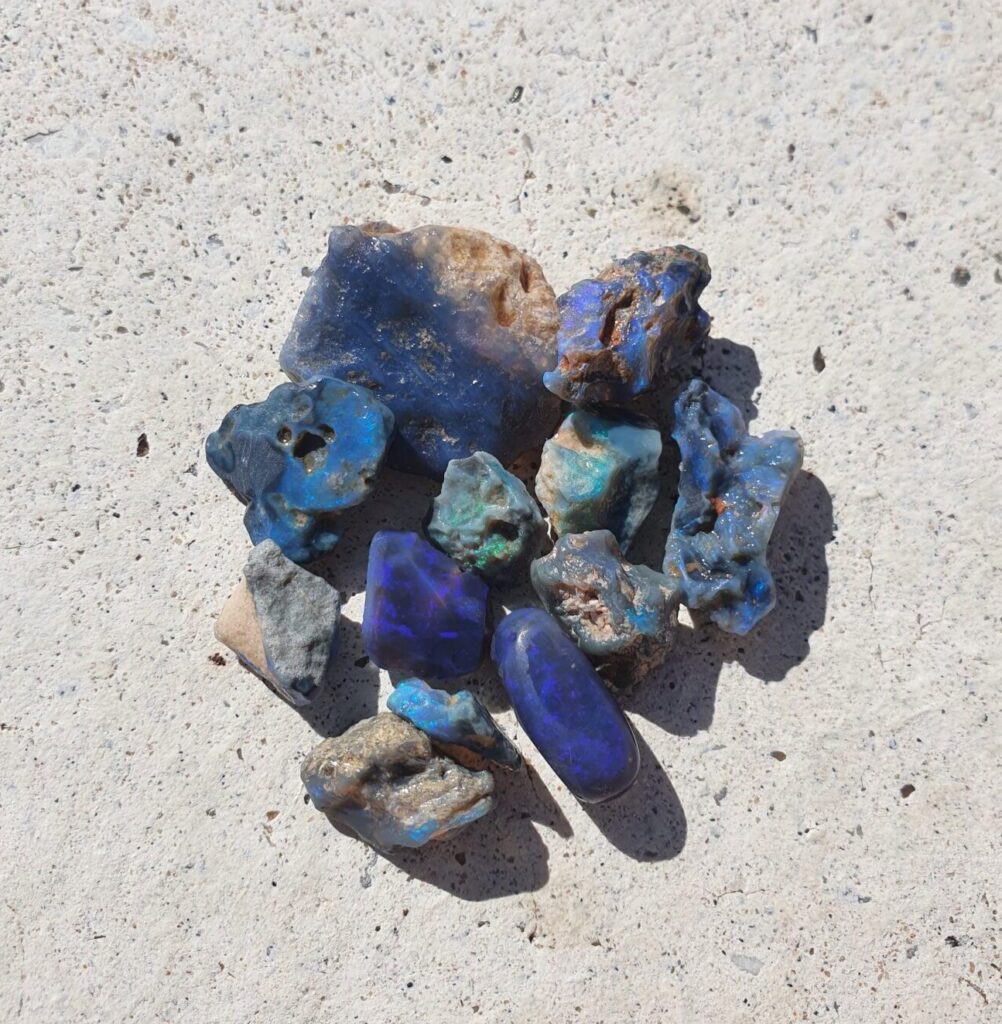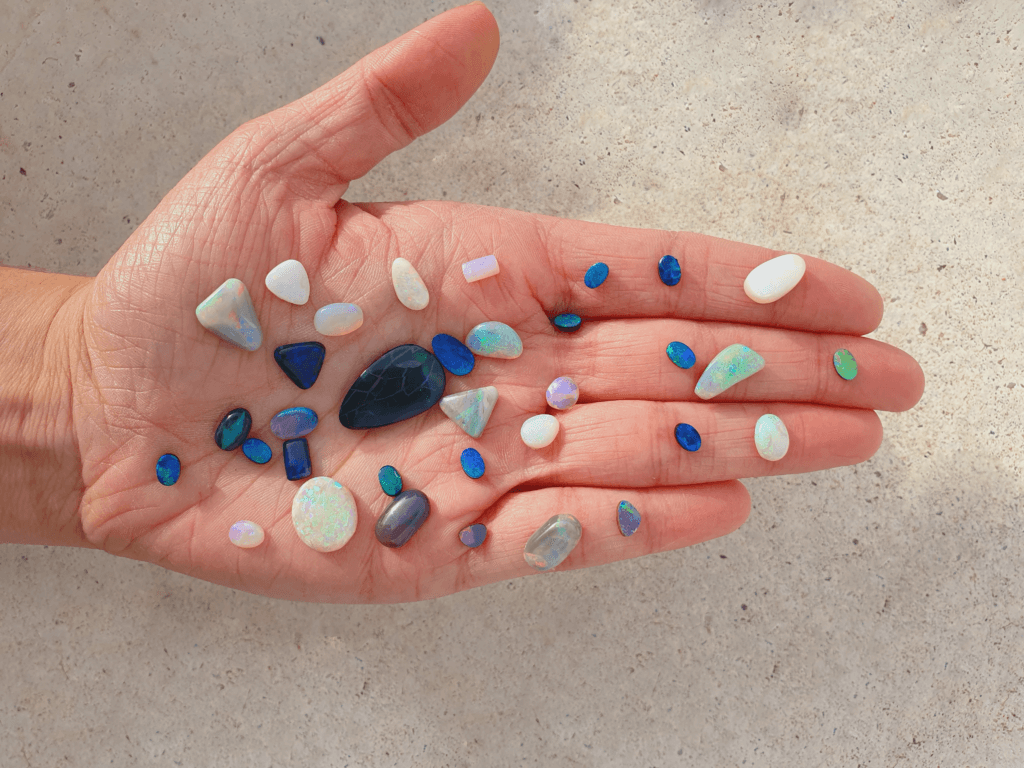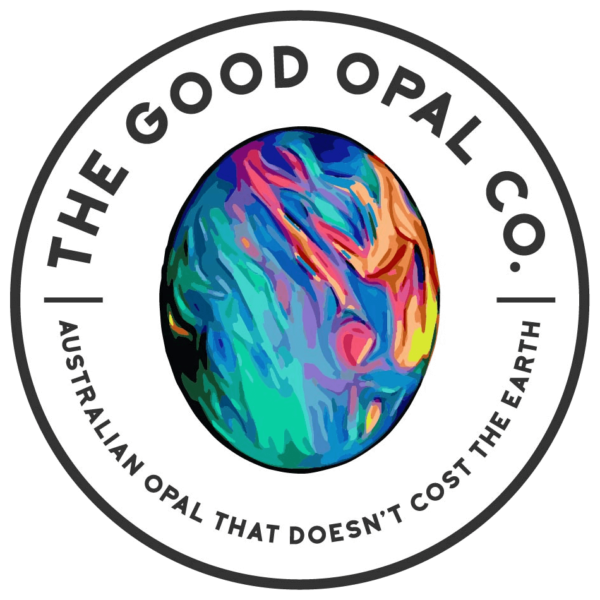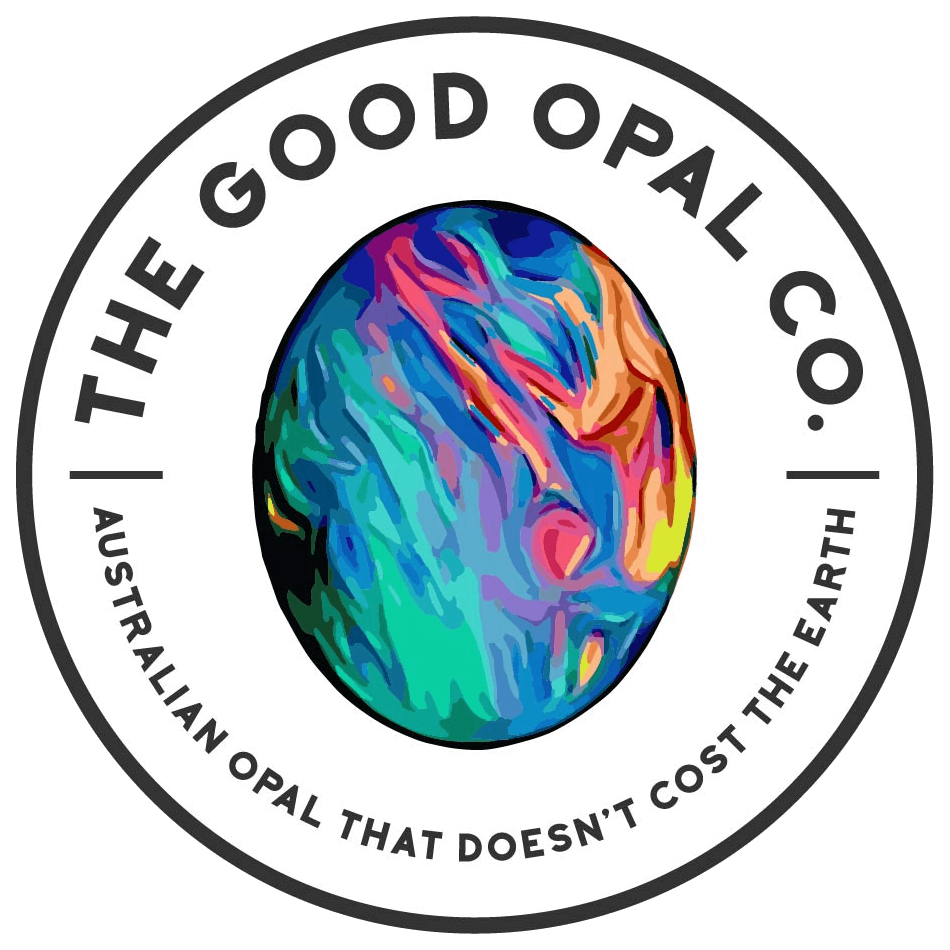Gathered and googled over years of curiosity, we have put together some important facts vs fictions we have come to learn about opal over the years here at The Good Opal Co. to help you, our customers learn about opal!
Time to learn about opal…
Fiction: Opals need to be soaked in water to prevent cracking.
Fact: Australian Opal is non-porous meaning– it cannot be affected in anyway by soaking in water, oil, acid, or anything else for that matter! Whilst Ethiopian Opal absorbs water, chemicals and even the oils on our skin-which make them very fragile, the water content in Australian opal is determined during the formation of the stone-110 million years ago to be exact! Soaking your opal in water will do nothing to increase the life of your opal. However, wetting an already cracked/scratched stone can hide these faults-making opals cutting tricky at times. If you’d like to learn about Ethiopian Opal, this page has some great info: https://geology.com/gemstones/opal/ethiopian-opal.shtml.
Fiction: Opals are fragile and break easily.
Fact: It’s true that opals are more fragile than most gemstones, but they’re not as fragile as some people imagine- and you’ll learn about opal the more you handle it. Before an opal makes it into a collection or piece of jewellery it goes through hours of spinning in an agitator-smashed against other sand stones and opal material to wash away unwanted material and expose colour.
Opals are then grinded on diamond wheels at 1400 rpm before being polished so they aren’t as frail as you think. Opals are about the same hardness as glass, yes it will wear and can lose its shine over time with surface scratching but a repolish by any jeweller will fix this right up back to its original condition.
Avoid heavy manual labour or any vigorous activity where your opal might come into contact with hard surfaces and your opal will enjoy a long and happy life. When in doubt, safe is better than sorry but with proper care opals can be worn every day. If you’re worried about chipping your opal, Boulder opals/Andamooka opals are sturdier and less easy to damage.
Fiction: Opal grazing, and cracks can be fixed by soaking the opal in glycerine.
Fact: See Fact 1. Opals are non-absorbent so putting cracked or grazed opals in glycerine will just make them oily. The only way to ‘fix’ is crack or graze other then cutting it away completely is to use opticon solution-this we had to learn about opal the hard way :(. However, this solution will only help to protect the opal from further cracks and cannot fix the existing damage.
Fiction: Black opals are completely black.

Fact: If an opal were completely black, it would have no value. Black opals display a myriad of rainbow colours, and the more colourful the better. ‘Black’ simply refers to the comparatively dark body tone of the stone when compared to the milky body tone of other opals like crystal and white opals. Black Opal is the rarest Gemstone on Earth and can only be found in Australia.
Until recently, Black opal could be found in both Mintabie, South Australia as well as the black opal capital of the world, Lightning Ridge. However, due to Mintabie’s unfortunate closure, Lightning Ridge is now the only place on earth where true Black Opal can be found.
Fiction: Sun light can cause an opal to dry out.
Fact: Unlike Mexican and Ethiopian opal, Sun light will only make Australian opal shine brighter and more beautifully. Fire can cause any opal to crack or dry, destroying the colour. But I’d hope most people wouldn’t be putting their opals in fire anyway! My fellow Jewellers! This includes you. Never attempt to solder a piece of jewellery with opal in it. The opal must be removed prior to soldering or it will lead to devastating results.
Fiction: Solid, doublet and triplet opals should all be treated the same.
Fact: Solid, doublet and triplet opals all have different care requirements. Solid opals are the sturdiest and can be worn in water. Doublets and triplets are more fragile and are more likely to crack with harsh handling, so take extra care of your doublets and triplets. It’s important to note also that doublet and triplet opals should never be immersed in any liquid, as prolonged exposure can lead to separation of the stone’s layers.
This isn’t to say that after 5 seconds, the glue between the layers of a doublet or triplet will come undone. But extra care is needed to ensure a long life of your doublets and triplets.
Fiction: Rubbing a stone with glycerine, rubbing it with toothpaste, or soaking it in water will revive a stone’s lustre when it needs polishing, or prevent a stone from losing its lustre.
Fact: Wetting a stone will temporarily make it look better, but there’s no other way to restore an old stone’s lustre apart from having it professionally polished. Solid opals may eventually need to be re-polished after several years due to tiny scratches on the surface removing the fine polished appearance of the stone. But this is a simple procedure that any jewellery professional will be able to do.
Fiction: Opals are bad luck.
Fact: The ‘bad luck’ Fiction is the result of centuries of misinformation, superstition, wives’ tales, and jealous diamond traders spreading rumours to increase the value of diamonds-which are not rare (opals are rare and way cooler-just saying). Opal has also been considered a good luck talisman and lucky charm throughout the ages and has been prized by many cultures.
Fiction: Triplet opals are opals with three colours.
Fact: The name ‘triplet’ refers to the number of layers in the stone, not the number of colours. Triplets consist of a thin slice of opal glued to a black backing, which is designed to imitate black opals. The triplets have a third layer of crystal, glass, or quartz capping to round off the stone and give it a cabochon.
‘Doublets’, on the other hand, consist of two layers – a thin layer of opal and a black backing, with no capping. Doublets are often made to bring out the best colour of crystal opals that would otherwise look see through due to weakness in the colour of the opal.
Fiction: The light causing the opal’s colours comes from within the stone.
Fact: Opal’s colours are caused by the reflection and diffraction of white light which enters the top of the stone. The light bounces around inside the tiny, microscopic silica spheres within the stone, causing the diffraction of light and the ‘prism’ or rainbow effect which we all know and love.
Fiction: Opals are a poor investment

Fact: Opals are a great investment as they are in limited supply, and mines are becoming scarce. Mintabie, South Australia recently closed all mining operations. This has resulted in Mintabie Opals skyrocketing in value due to their limited supply. Black Opal is the rarest gemstone on the planet making it incredibly rare and a solid investment for those looking to steer away from stashing their hard earned dollars in gold and silver!
Fiction: Lightning Ridge is the only mine left in Australia
Fact: Opals are mined in 3 different states in Australia. There are currently 12 active mining towns in Australia.
- Lightning Ridge
- White Cliffs
- Andamooka
- Lambina
- Mintabie (now closed)
- Koroit
- Jundah
- Opalton
- Eromanga
- Quilpie
- Cunnamulla
- Coober Pedy
Fiction: Opals Can’t be warn in cold weather
Fact: Opal’s sensitivity to cold is severely exaggerated, Australian opals can be left in the freezer for a week and come out fine. However, exposing your opal to extreme fluctuations of heat is not recommended, like glass it can crack when changing from one extreme to another.
Fiction: If you put an opal in an ultra sonic cleaner it will crack
Fact: Putting an opal into an ultrasonic to clean it does not make the opal crack! It remains completely the same, aside from a bit of extra sparkle. There is only one exception to this rule for Australian opal and that is some types of boulder opal.
Boulder opal with a sandy type of ironstone host on the back could crumble in an ultrasonic. However in saying that, I’ve put Boulder opal in an ultrasonic cleaner before to remove dirt from a crevasse I couldn’t quite polish and it came out perfectly fine.
Fiction: Opal was formed the same way as glass.
Fact: Opal is formed from a solution of silicon dioxide and water. As water runs down through the earth, it picks up silica from sandstone, and carries this silica-rich solution into cracks and voids , caused by natural faults or decomposing fossils. As the water evaporates, it leaves behind a silica deposit. This cycle repeats over very long periods of time, and eventually opal is formed.
Each local opal field or occurrence must have contained voids or porosity of some sort to provide a site for opal deposition. In volcanic rocks and adjacent environments the opal appears to fill only vughs and cracks whereas in sedimentary rocks there are a variety of voids created by the weathering process.
Leaching of carbonate from boulders, nodules, many different fossils, along with the existing cracks, open centres of ironstone nodules and horizontal seams provide a myriad of moulds ready for the deposition of secondary minerals such as opal.
Much of the opal deposition is not precious. It is called “potch” by the miners, or common opal by the mineralogist, as it does not show a play of colour.
Opaline silica not only fills the larger voids mentioned but also may fill the pore space in silt and sand size sediments cementing the grains together forming unique deposits, known as matrix, opalised sandstone or “concrete” which is a more conglomeratic unit near the base of early Cretaceous sediments.
The many variations in the types of opal depends on a number of factors. In particular, the climate provides alternating wet and dry periods, creating a rising or more importantly a falling water table which concentrates any silica in solution.
The silica itself is formed either by volcanic origin or by deep weathering of Cretaceous clay sediments producing both silica and white kaolin often seen associated with the Australian opal fields. Special conditions must also prevail to slow down a falling water table in order to provide the unique situation for the production of its own variety of opal.
While volcanic-hosted and other types of precious opal are found in Australia, virtually all economic production comes from sediment-hosted deposits associated with the Great Australian Basin. Australia has three major varieties of natural sediment-hosted precious opal – black opals from Lightning Ridge in New South Wales, white opals from South Australia, and Queensland boulder and matrix opal.
Fiction: There is ‘fire’ opal in Australia
Fact: Very little precious opal is known to be found in Western Australia. The only known source is ‘Williams Opal Mine’ near Coolgardie. As seen on a previous season of Outback Opal Hunters, there are deposits of ‘red’ jelly opal that some miners are hoping will turn to colour similar to that of Mexican fire Opal. However, no deposits of ‘fire’ opal in Australian have been found.
Fiction: Opal has been found in Victoria
Fact: Yes and No.
Let me explain. There are gemstones that consist of the same properties that form an opal and by definition are a variety of opal but look nothing like the opal we know and love and have little to no commercial value-that’s what’s found in Victoria. There are two areas in all of Victoria, Australia where a variation of opal that bares colour has been found.
These areas are Lake Boga granite quarry, Swan Hill and Glenrowan, Wangaratta. However, the Opal material is incredibly sparse and holds little to no commercial value and that is why there are no Opal mines in Victoria. The best description I can provide is that the material is a lot like gold in quartz. Mixed in small veins, unextractable and unusable. Sadly.
Want to learn about opal some more? Visit our Blog Section at:https://www.goodopalco.com/blog-the-good-opal-co-blogs-on-opal/

